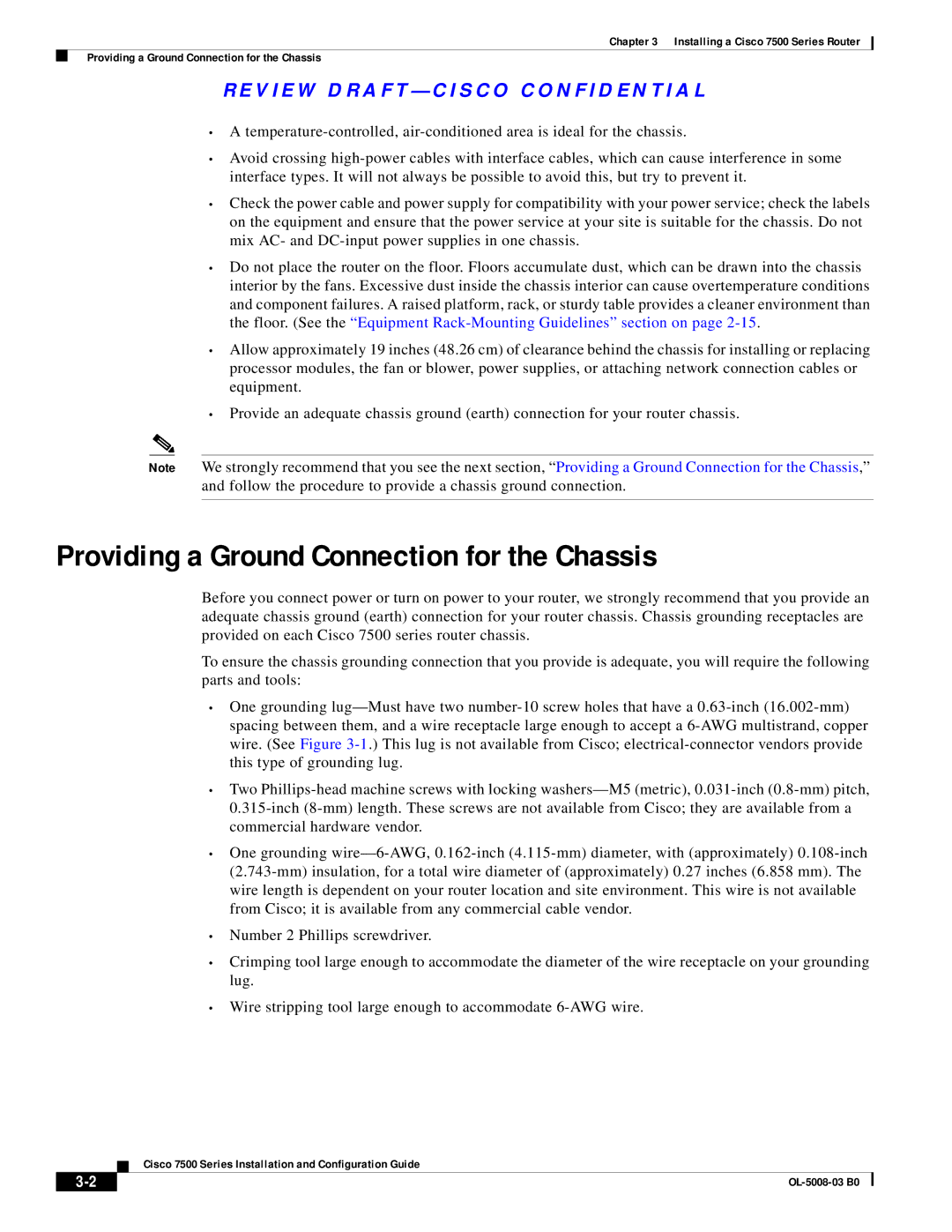
Chapter 3 Installing a Cisco 7500 Series Router
Providing a Ground Connection for the Chassis
R E V I E W D R A F T — C I S CO CO N F I D E N T I A L
•A
•Avoid crossing
•Check the power cable and power supply for compatibility with your power service; check the labels on the equipment and ensure that the power service at your site is suitable for the chassis. Do not mix AC- and
•Do not place the router on the floor. Floors accumulate dust, which can be drawn into the chassis interior by the fans. Excessive dust inside the chassis interior can cause overtemperature conditions and component failures. A raised platform, rack, or sturdy table provides a cleaner environment than the floor. (See the “Equipment
•Allow approximately 19 inches (48.26 cm) of clearance behind the chassis for installing or replacing processor modules, the fan or blower, power supplies, or attaching network connection cables or equipment.
•Provide an adequate chassis ground (earth) connection for your router chassis.
Note We strongly recommend that you see the next section, “Providing a Ground Connection for the Chassis,” and follow the procedure to provide a chassis ground connection.
Providing a Ground Connection for the Chassis
Before you connect power or turn on power to your router, we strongly recommend that you provide an adequate chassis ground (earth) connection for your router chassis. Chassis grounding receptacles are provided on each Cisco 7500 series router chassis.
To ensure the chassis grounding connection that you provide is adequate, you will require the following parts and tools:
•One grounding
•Two
•One grounding
•Number 2 Phillips screwdriver.
•Crimping tool large enough to accommodate the diameter of the wire receptacle on your grounding lug.
•Wire stripping tool large enough to accommodate
Cisco 7500 Series Installation and Configuration Guide
|
| |
|
